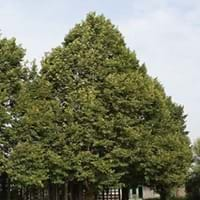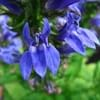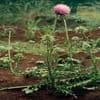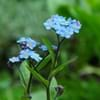Life Span
Annual
Perennial
Type
Flowering Plants, Shrubs
Tree
Origin
America
North America, Northeastern United States, Mid-Atlantic United States, Southeastern United States, North-Central United States, Central United States, South-Central United States, Texas, Canada
Types
Lobelia aberdarica, Lobelia leschenaultiana, Lobelia canbyi
Not Available
Number of Varieties
Not Available
Habitat
Open areas, River side, Woods
gardens, Hardwood forests, Hillside, Tropical rainforest, Woods
USDA Hardiness Zone
4-9
3-8
Sunset Zone
A1, A2, A3, H1, H2, 1a, 1b, 2a, 2b, 3a, 3b, 4, 5, 6, 7, 8, 9, 10, 11, 12, 13, 14, 15, 16, 17, 18, 19, 20, 21, 22, 23, 24
1a, 1b, 2a, 2b, 3a, 3b, 4, 5, 6, 7, 8, 9, 10, 11, 12, 13, 14, 15, 16, 17
Habit
Cushion/Mound-forming
Upright/Erect
Flower Color
Blue, Red, Violet, White
Light Yellow
Flower Color Modifier
Bicolor
Bicolor
Fruit Color
Not Available
Sandy Brown
Leaf Color in Spring
Dark Green
Green
Leaf Color in Summer
Green
Dark Green
Leaf Color in Fall
Green
Light Yellow, Brown, Ivory
Leaf Color in Winter
Not Available
Not Available
Leaf Shape
Cushion
Heart-shaped
Plant Season
Fall, Summer
Spring, Summer, Fall
Sunlight
Full Sun, Partial shade
Full Sun, Partial Sun
Type of Soil
Well drained
Clay, Loam
The pH of Soil
Acidic
Acidic, Neutral, Alkaline
Soil Drainage
Well drained
Well drained
Bloom Time
Early Fall, Early Summer, Late Summer, Mid fall, Mid Spring
Early Summer
Tolerances
Not Available
Not Available
Where to Plant?
Container, Ground, Pot
Ground
How to Plant?
Seedlings
Seedlings, Stem Planting
Plant Maintenance
Medium
Medium
Watering Requirements
Form a Soil ring to water efficiently, Prefer drip-irrigation instead of Over-head watering, Requires watering in the growing season, Use Mulches to help prevent water loss during hot and windy weather, Water twice a day in the initial period
Requires watering in the growing season, Water Deeply, Water twice a day in the initial period
In Summer
Lots of watering
Lots of watering
In Spring
Moderate
Moderate
In Winter
Average Water
Average Water
Soil pH
Acidic
Acidic, Neutral, Alkaline
Soil Type
Well drained
Clay, Loam
Soil Drainage Capacity
Well drained
Well drained
Sun Exposure
Full Sun, Partial shade
Full Sun, Partial Sun
Pruning
Cut or pinch the stems, Prune after flowering, Prune to control growth, Remove dead or diseased plant parts, Remove deadheads
Remove damaged leaves, Remove dead branches, Remove dead leaves
Fertilizers
All-Purpose Liquid Fertilizer
All-Purpose Liquid Fertilizer
Pests and Diseases
Botrytis Blight, Crown rot, Pythium rot, Stem spot
Red blotch
Plant Tolerance
Drought
Drought
Flowers
Yes
Insignificant
Flower Petal Number
Single
Single
Foliage Texture
Fine
Coarse
Foliage Sheen
Matte
Matte
Attracts
Birds, Hummingbirds
Not Available
Allergy
coma, convulsions, Diarrhea, exhaustion, Nausea, salivation, Vomiting, weakness
Not Available
Aesthetic Uses
Beautification, Bouquets, Showy Purposes, Used for decorating walls, fences, gates, hedges, etc.
Showy Purposes
Beauty Benefits
Not Available
Not Available
Environmental Uses
Air purification
Air purification
Medicinal Uses
Asthma, Bronchitis, Croup
Bladder Infection, Cold, Cough, Diuretic, Fever, Headache, High blood pressure, Used as a sedative
Part of Plant Used
Leaves, Seeds
Whole plant
Other Uses
Showy Purposes
Beneficial species for attracting pollinators, Used as Ornamental plant, Used for its medicinal properties, Used in making musical instruments
Used As Indoor Plant
Yes
No
Used As Outdoor Plant
Yes
Yes
Garden Design
Bedding Plant, Bog Garden, Edging, Foundation, Hanging Basket, Houseplant, Mixed Border, Rock Garden / Wall
Shade Trees, Street Trees
Botanical Name
Lobelia laxiflora
TILIA americana
Common Name
Lobelia
American Basswood
In Hindi
Lobelia
अमेरिकी Basswood
In German
Lobelie
amerikanischen Basswood
In French
Lobelia
tilleul d'Amérique
In Spanish
Lobelia
tilo americano
In Greek
λοβηλία
Αμερικανός Basswood
In Portuguese
Lobélia
Basswood americano
In Polish
Lobelia
Amerykańska Lipa
In Latin
Lobelia
American Basswood
Phylum
Anthophyta
Anthophyta
Class
Dicotyledonae
Magnoliopsida
Family
Campanulaceae
Tiliaceae
Clade
Angiosperms, Asterids, Eudicots
Angiosperms, Eudicots, Rosids
Tribe
Not Available
Tileae
Subfamily
Lobelioideae
Tilioideae
Properties of Lobelia and American Basswood
Wondering what are the properties of Lobelia and American Basswood? We provide you with everything About Lobelia and American Basswood. Lobelia doesn't have thorns and American Basswood doesn't have thorns. Also Lobelia does not have fragrant flowers. Lobelia has allergic reactions like coma, convulsions, Diarrhea, exhaustion, Nausea, salivation, Vomiting and weakness and American Basswood has allergic reactions like coma, convulsions, Diarrhea, exhaustion, Nausea, salivation, Vomiting and weakness. Compare all the properties and characteristics of these two plants. Find out which of these plant can be used as indoor plant. If you are interested to decorate your house and garden, find out aesthetic uses, compare them and select the plant which will beautify your surrounding. Along with beautification, try comparing medicinal and edible uses of Lobelia and American Basswood and you can choose the plant having best and most benefits.
Season and Care of Lobelia and American Basswood
Season and care of Lobelia and American Basswood is important to know. While considering everything about Lobelia and American Basswood Care, growing season is an essential factor. Lobelia season is Fall and Summer and American Basswood season is Fall and Summer. The type of soil for Lobelia is Well drained and for American Basswood is Clay, Loam while the PH of soil for Lobelia is Acidic and for American Basswood is Acidic, Neutral, Alkaline.
Lobelia and American Basswood Physical Information
Lobelia and American Basswood physical information is very important for comparison. Lobelia height is 0.54 cm and width 0.38 cm whereas American Basswood height is 1,520.00 cm and width 760.00 cm. The color specification of Lobelia and American Basswood are as follows:
Lobelia flower color: Blue, Red, Violet and White
Lobelia leaf color: Dark Green
American Basswood flower color: Light Yellow
- American Basswood leaf color: Green
Care of Lobelia and American Basswood
Care of Lobelia and American Basswood include pruning, fertilizers, watering etc. Lobelia pruning is done Cut or pinch the stems, Prune after flowering, Prune to control growth, Remove dead or diseased plant parts and Remove deadheads and American Basswood pruning is done Remove damaged leaves, Remove dead branches and Remove dead leaves. In summer Lobelia needs Lots of watering and in winter, it needs Average Water. Whereas, in summer American Basswood needs Lots of watering and in winter, it needs Average Water.





